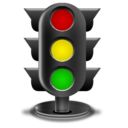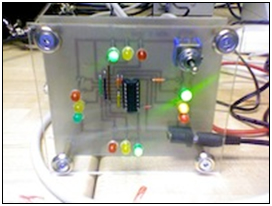First off, you should be aware of a few of my assumptions and expectations in designing (major) group projects for this course (feel free to seek clarification on any of them), 
- Students will be required to demonstrate the ability to work with any and all classmates. Over the course of the year I will arrange the groups to ensure you work with everyone at some point in time.
- Students will contribute to the development of project objectives and scope.
- The objectives will be challenging, yet achievable, for students prepared to think deeply and demonstrate strong organizational skills.
- Engagement in the projects will lead to the development of new skills.
- Projects will provide opportunities for both collaborative and independent modes of problem-solving.
- Project design considerations will allow for creative flexibility to permit students to pursue, but not be limited to, their strengths and interests.
- Projects will provide avenues for formative and summative discussion and communication.
- Failure to achieve the desired project objectives will not 'necessarily' be considered an unsuccessful outcome.
 It is with these assumptions in mind that, on Tuesday October 8, we will begin with a 'whole class' formulation of the design objectives for the traffic Intersection simulator. Here are the four (immutable) requirements of the Project.
It is with these assumptions in mind that, on Tuesday October 8, we will begin with a 'whole class' formulation of the design objectives for the traffic Intersection simulator. Here are the four (immutable) requirements of the Project.
- The Project provides a working model of an intersection with four-way traffic lights.
- The Project will be a standalone (not connected to an Arduino) embedded (an onboard ATmega238 microcontroller) system.
- Electronic components will be soldered to a student-fabricated, etched circuit board.
- The components on the top of the circuit board will be protected by a sheet of CAD-designed, laser-cut acrylic, elevated from the board by standoffs.
Roles and Responsibilities
 All group members contribute to all aspects of the Project. However, within the group, students will assume a lead or primary role to ensure the overall objectives are met. These roles break down as defined below. Each group with declare the assignment of roles to me at the outset of the project and I will complete the table below right.
All group members contribute to all aspects of the Project. However, within the group, students will assume a lead or primary role to ensure the overall objectives are met. These roles break down as defined below. Each group with declare the assignment of roles to me at the outset of the project and I will complete the table below right.
- Designer: Circuit specifications (V,I,R), EAGLE, ViaCAD specifications and layout, parts (incl. acrylic) acquisition
- Builder: Circuit board production, soldering, and assembly
- Coder: software development (data and code design efficiencies, state tables, timing control considerations, robustness, documentation, etc.)
- Shared: Media gathering (photos, video, web site)
- Individual: Protoyping, ER submission with contributions from group members
Group Member Requirements
- Make a significant contribution to your group's effort
- Assume primary responsibility with high expectation for other group members to assume theirs with minimal interference
- ER sections: Purpose, Reference, Procedure, Sketch, Media (photo(s) and a link to your group's video confirmation), and Summary. You decide the content of each section. A premium will be awarded for your inclusion of strategic elements, great code, creativity, and the recognition of the recommendations in the Technical Writing document
- Submit to handin by the deadline with the Subject Line: Project 3. The Intersection
|
| # |
Designer? |
Builder? |
Coder? |
| 1 |
LD, TH, GT |
| 2 |
ME, GB, SC |
| 3 |
AK, TG, RF |
| 4 |
SB, AE, PW, RS |
|
References and Research
- (Project) Traffic Light and Pedestrian Crossing (Australian) (The coordinated in-picture footage of the crossing is genius!)
- (Project) Arduino, QP, and Road Intersection Requirements
- (Software) EAGLE, ViaCAD. Mariano's father has prepared a series of fundamental 2D CAD skills in ViaCAD 2D.
- (Arduino as Programmer) From an Arduino to a Microcontroller on a Breadboard


 It is with these assumptions in mind that, on Tuesday October 8, we will begin with a 'whole class' formulation of the design objectives for the traffic Intersection simulator. Here are the four (immutable) requirements of the Project.
It is with these assumptions in mind that, on Tuesday October 8, we will begin with a 'whole class' formulation of the design objectives for the traffic Intersection simulator. Here are the four (immutable) requirements of the Project. All group members contribute to all aspects of the Project. However, within the group, students will assume a lead or primary role to ensure the overall objectives are met. These roles break down as defined below. Each group with declare the assignment of roles to me at the outset of the project and I will complete the table below right.
All group members contribute to all aspects of the Project. However, within the group, students will assume a lead or primary role to ensure the overall objectives are met. These roles break down as defined below. Each group with declare the assignment of roles to me at the outset of the project and I will complete the table below right.